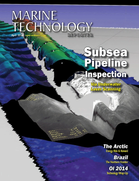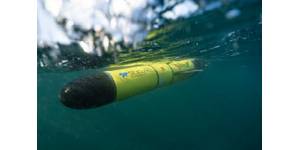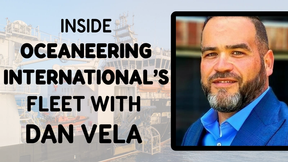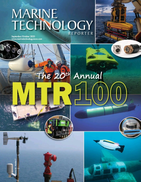The Future of Arctic Drilling: 90 Billion Barrels & Counting
By Tyson Bottenus
Royal Dutch Shell announced at the end of January that it would suspend all drilling activity in Arctic waters off Alaska due to a “multibillion-dollar scaling back of new projects.” The move comes just two weeks after the Anglo-Dutch company pulled out of an Australian liquefied natural gas (LNG) project and a month after it scrapped plans on a $20 billion dollar project to develop an onshore natural gas-to-diesel facility in Louisiana.
Aside from Royal Dutch Shell’s financial difficulties, it also begs the question as to what the future of Arctic drilling will be in the coming years. In 2008, the United States Geological Survey estimated that areas north of the Arctic Circle had an estimated 90 billion barrels of undiscovered, “technically recoverable” oil. But seeing as the region is covered by ice three fourths of the year, many think that the quest to drill in the Arctic Ocean is quixotic at best.
“Industrial development in these waters brings a new set of challenges and a larger set of risks than in other oceans because people and machinery will be working in some of the most remote and harshest conditions on the planet,” said the PEW Charitable Trusts in a report from September 2013 on what standards oil and gas companies should enact to prevent disasters such as the type Deepwater Horizon did to the Gulf of Mexico in 2010.
The threat of incidents like Deepwater Horizon has brought environmental activism on arctic oil drilling into frenzy. Last September Greenpeace activists and crewmembers were arrested after attempting to scale Gazprom’s Prirazlomnaya drilling platform in the Pechora Sea, north of Russia. Their detainment was met with an international outcry and in November their charges were dropped from piracy to hooliganism before eventually getting dismissed by Russian courts.
What worries scientists about the Arctic is how difficult an oil spill response plan would be to carry out if a spill occurred. Unlike with Deepwater Horizon – a spill that happened in a warm water environment, an oil spill in the Arctic would be difficult at best, devastating at its worst in a complex and fragile environement. The presence of ice hindered cleanup efforts when Icelandic containership Godafoss ran aground and started leaking oil in February 2011.
Now that Royal Dutch Shell has suspended plans to drill, it remains to be seen who will take up the charge to procure the estimated 90 billion barrels. An overwhelming question that will need to be asked eventually is how - in such a vast and remote region - will they assemble such a response team?
THE KULLUK
On December 21, 2012, the mobile drilling barge Kulluk departed from the docks of Dutch Harbor, Alaska on its way south by tug to Seattle. She carried a crew of 18 along with 150,000 gallons of fuel and oil onboard. The 81-m rig, owned and operated by Royal Dutch Shell, had a four-day window of good weather to get out of the notoriously rough and cold patch of water known as the Gulf of Alaska. The distance between the two ports is roughly 2,000 miles and it was expected that the journey would take weeks. Top speed for the Kulluk was 4 knots. Time passed interminably for the crew, who were mostly from the Gulf of Mexico and had never been this far north.
As they motored, a storm developed and the towline connecting the Kulluk to the tug snapped. Hastily the crew rigged a weaker, emergency towline but this became useless when the tug’s engines cut out, leaving both the tug and 28,000 ton Kulluk at the mercy of the storm. As this was the dead of winter in the Gulf of Alaska, there were no other boats nearby that could lend any assistance, so a distress call went out to the Coast Guard. Gusts of wind at this time reportedly were in excess of over 50 knots and produced 40 ft.waves.
The Coast Guard arrived but soon found the situation out of hand. Now with 70 knot winds blowing hard, the tugboat Alert released Kulluk and let her drift. At 9 p.m. on December 31, Kulluk ran aground on the rocks of Sitkalidak Island off Kodiak. It would be another week before crews could float the Kulluk again. In the days and weeks afterward, experts weighed in with the opinion that it was clear Shell’s massive $290 million effort to extract oil was no match for Alaska’s weather and sea conditions.
And so did the Department of the Interior who, in a March 2013 report, stated:
This review has confirmed that Shell entered the drilling season not fully prepared in terms of fabricating and testing certain critical systems and establishing the scope of its operational plans. The lack of adequate preparation put pressure on Shell’s overall operations and timelines at the end of the drilling season. Indeed, because Shell was unable to get certified and then deploy its specialized Arctic Containment System (ACS) – which the Department of the Interior (DOI) required to be on site in the event of a loss of well control – the company was not allowed to drill into hydrocarbon-bearing zones.
Then-Secretary of the Interior Ken Salazar put it in even simpler terms: “Shell screwed up in 2012 and we are not going to let them screw up after their pause is removed.”
Lessons Learned
The Pew Charitable Trusts reports in its recommendations on Arctic drilling that all drilling operations should be limited to periods of time when it is actually possible for crews to clean up the oil spill in Arctic conditions. Otherwise why else would a company go in if they couldn’t clean up a potential spill?
The answer, simply, is that right now they legally can.
With regards to oil spills and how the U.S. legislation operates, it’s safe to say that much of the regulations and laws that exist now are knee-jerk reactions to prior calamities. After the Exxon Valdez spilled 11 million gallons into Alaska’s Prince William Sound, the United States Congress passed the Oil Pollution Act of 1990 – a defining act that required oil and gas companies to create a “plan to prevent spills that may occur” and have a “detailed containment and cleanup plan” for oil spills.
Exxon Valdez was the largest oil spill in US history - until Deepwater Horizon in 2010. That year, a bill almost passed which would have raised from $75 million to $10 billion limit that for which BP would be held responsible. But it didn’t pass, and although BP was still responsible for all cleanup costs, statutes in the Oil Pollution Act of 1990 limited BP’s monetary damages to $75 million.
As the Arctic warms, and it becomes more feasible for companies such as Royal Dutch Shell to start drilling offshore, it only seems responsible that the fiscal penalties involved with an accidental oil spill increase. Currently there is no disincentive for oil and gas companies to enter into risky environmental situations. Incidents such as that of the Kulluk in 2012, or the lessons that remained unlearned after Exxon Valdez in 1990 and twenty years later, with Deepwater Horizon, plague the industry and need to be acted upon responsibly. Eleven people went down with the oil platform in 2010 when Deepwater Horizon blew up. Fortunately, no one passed away when the Kulluk became grounded.
After $6 billion dollars in spending on oil drilling in the Arctic, Royal Dutch Shell is no closer than it was when it began. With 2014 scrapped, is it possible that another campaign will be launched further on down the road, say in 2015 or 2016?
Many think not. Royal Dutch Shell’s new chief executive Ben van Beurden told analysts, “2014 will be a year where we are changing emphasis, to improve our returns and cash-flow performance.” He also stated, “the lack of a clear path forward means I am not prepared to commit further resources for drilling in Alaska.”
But even Royal Dutch Shell’s current financial issues can’t hinder the industry for too long. Other national players are beginning to enter the Arctic game, such as Canada and Denmark. Much of this activity is being brought about by Arctic ice beginning to melt away extensively as a result of climate change.
“In 50 years, if the ice cap is gone, it might change somewhat,” said Martin Pratt, an expert from UK’s Durham University, in an interview with Financial Times last February. “But it’s still going to be cold, it’s still going to be stormy and it’s still going to be dark. It isn’t the first place in the world you would look to exploit oil if you were given the choice.”
(As published in the April 2014 edition of Marine Technology Reporter - www.seadiscovery.com)



 August 2025
August 2025



